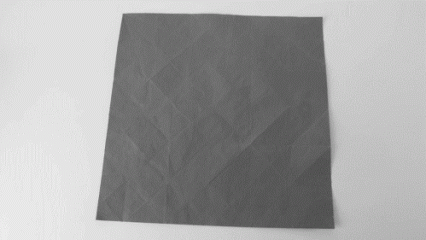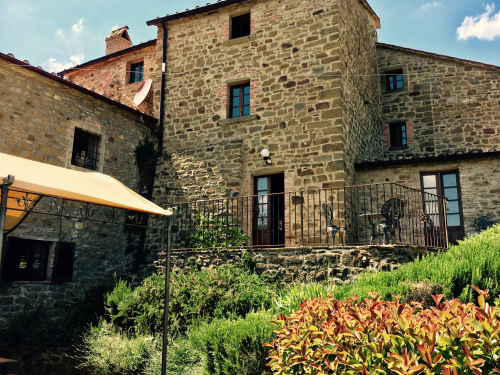Last time on ODL101, I explained the process of capturing light in order to take photos. Today, I will explore one of the three main properties of exposure: shutter speed.
Shutter speed is one of the three variables that you can control with most digital cameras today. Understanding shutter speed will allow you to take better photos, more consistently.
Remember the buckets? Your camera’s shutter speed is how long your buckets remain “open” to receive light. The shutter in a camera operates exactly the same as the shutter on a window; it’s there to let light in only when you want it!
The longer your shutter remains open, the more light is able to get in. That means that you can vary your exposure greatly just by controlling your shutter speed! (There are two other variables that will determine the rate at which light gets to your sensor, aperture and ISO, which will be covered in separate posts.)
At the most basic level, shutter speed will help determine proper exposure. In dark situations, you need more light, so you will typically need a longer shutter speed. In bright situations, you need a shorter shutter in order to keep from overexposing.
Shutter speed is universally referred to in fractions of a second. So 1/25 refers to one twenty-fifth of a second. 1/4 is a quarter second and so on. Exposures longer than 1/2 are usually referred to in decimal form (0.5s, 1.0s, 2.0s, etc.).
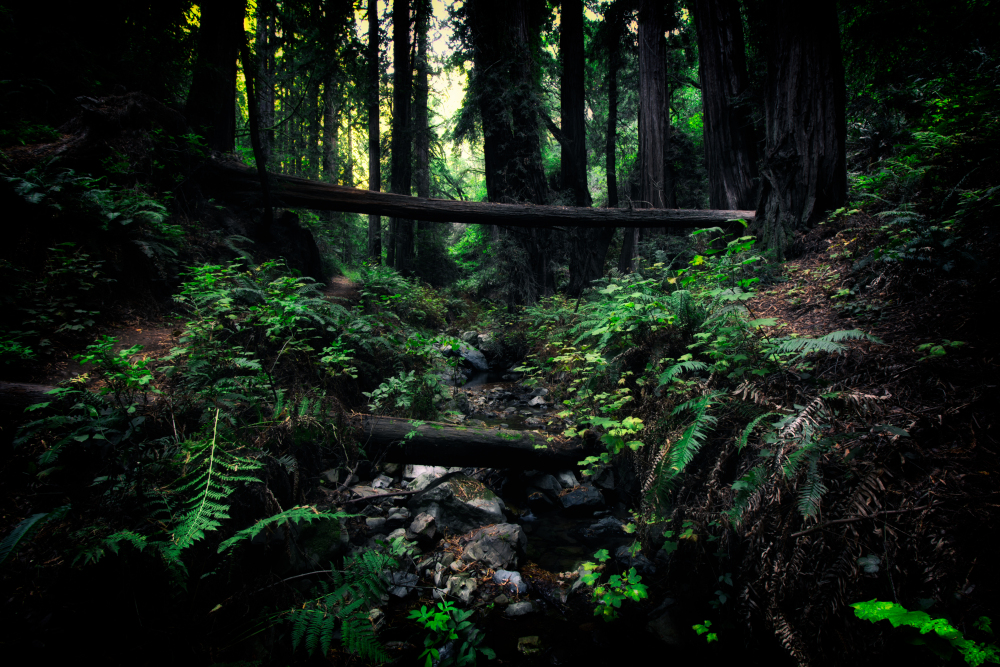 Webb Creek off of Steep Ravine Trail in Mt. Tamalpais State Park, CA. September 2017. (Canon 60D, EF-S 10-18mm f/4.5-5.6 IS STM; ISO 100|10mm|f/8.0|0.5 sec)
Webb Creek off of Steep Ravine Trail in Mt. Tamalpais State Park, CA. September 2017. (Canon 60D, EF-S 10-18mm f/4.5-5.6 IS STM; ISO 100|10mm|f/8.0|0.5 sec)
This photo of Webb Creek, above, was taken with a shutter speed of 0.5 sec. There was not much available light at the bottom of the ravine, so a longer shutter speed was necessary to compensate for the lack of light.
 Middle North Falls in Silver Falls State Park, OR. August 2017. (Canon 60D, EF 50mm f/1.8 II; ISO 200|50mm|f/1.8|1/1,600)
Middle North Falls in Silver Falls State Park, OR. August 2017. (Canon 60D, EF 50mm f/1.8 II; ISO 200|50mm|f/1.8|1/1,600)
In this photo, the light was hitting the falls in such a way that there was plenty of light available (helped that the nifty fifty is a “fast” lens), so I was able to use a fast shutter speed. At 1/1,600 of a second, the shutter was open for 800x less time than the previous photo. That’s pretty drastic.
Also, note how the water droplets seem frozen in space. This illustrates the secondary purpose of shutter speed: capturing movement.
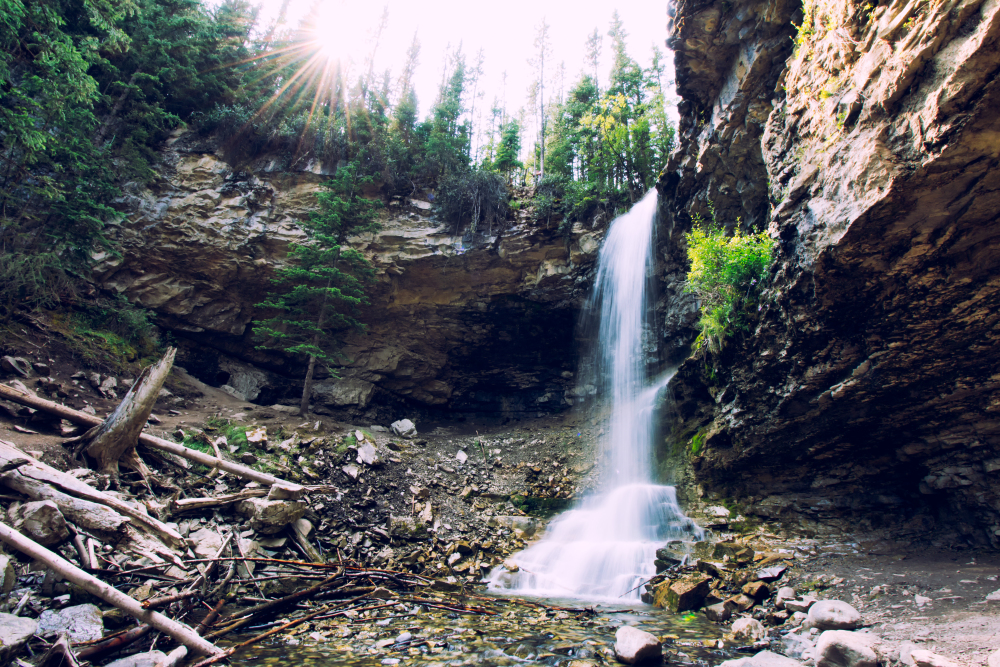 Troll Falls, AB, Canada. August 2017. (Canon 60D, EF-S 10-18mm f/4.5-5.6 IS STM; ISO 100|10mm|f/16|1/6)
Troll Falls, AB, Canada. August 2017. (Canon 60D, EF-S 10-18mm f/4.5-5.6 IS STM; ISO 100|10mm|f/16|1/6)
At longer exposures, waterfalls take on a smooth, slippery appearance that really captures the gravity of their movement. 1/6 sec is my preferred shutter speed for photographing moving water.
For most generic applications, capturing movement is undesirable. But with the right intent, you can capture some pretty cool moments.
 Shooting Star over Zion National Park, UT. August 2016. (Canon 60D, Canon EF 70-200mm f/4L USM; ISO 1000|70mm|f/4.0|8.0s)
Shooting Star over Zion National Park, UT. August 2016. (Canon 60D, Canon EF 70-200mm f/4L USM; ISO 1000|70mm|f/4.0|8.0s)
Sometimes, it’s better to be lucky than good.
The eight second exposure was necessary to capture the stars, but without the extended shutter, I never would have had a chance to capture this shooting star in motion.
But how does this information help the newbie photographer?
First, capturing movement does not just refer to the movement of your subject. At longer shutter speeds, the movement of the camera will be captured as well! (This is bad news for shaky handed photographers like myself!)
For a photographer using automatic settings, the camera will automatically select shutter speeds depending on available light. So, if you are shooting fast moving subjects (for example, your son swinging a baseball bat), you may find yourself sifting through blurry photos. With the right technique, this can be a desired effect.
Most modern point-and-shoot cameras come equipped with an “action mode.” This tells the camera to prioritize a faster shutter speed in order to “freeze” the action in place.
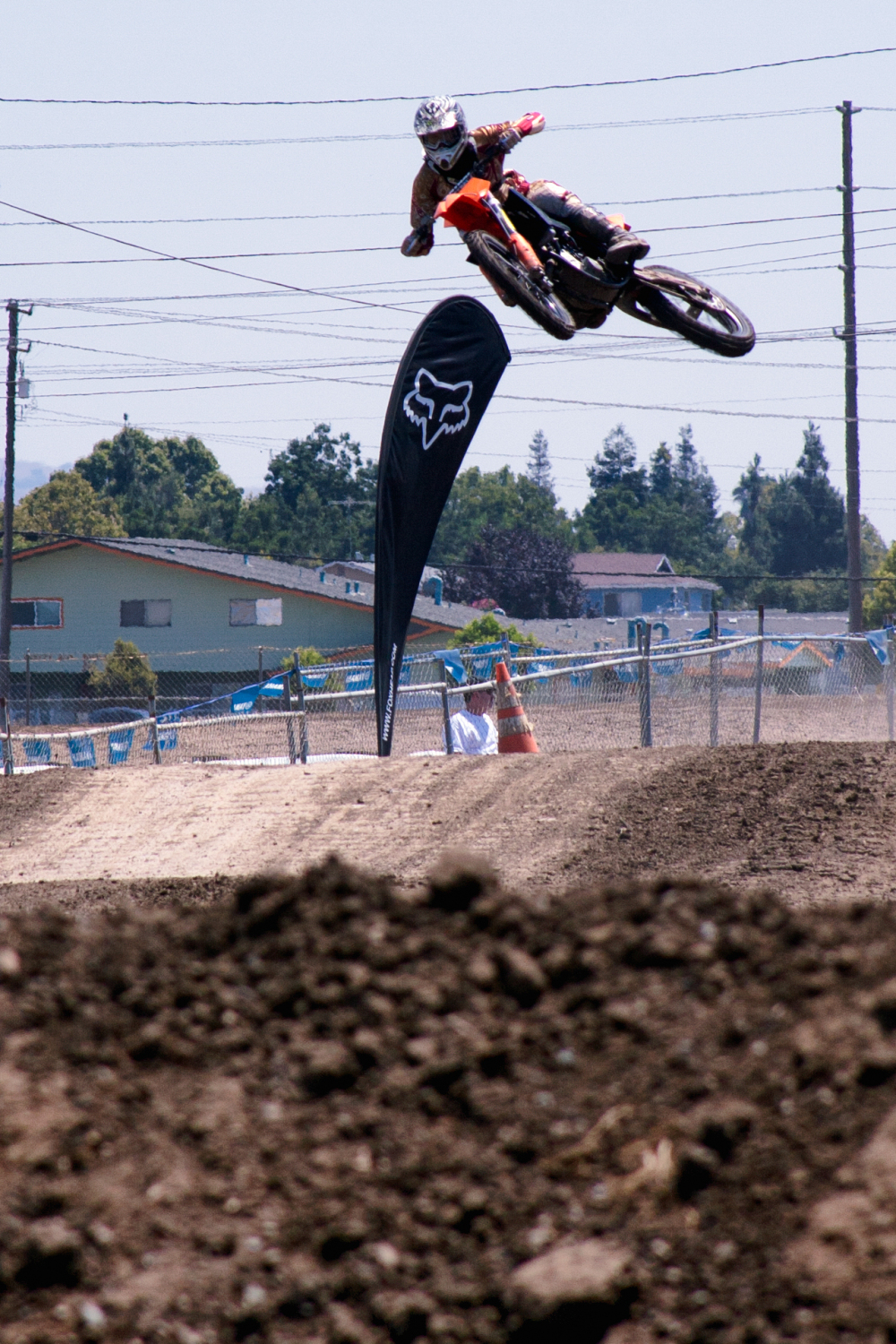 Motocross Biker at Santa Clara MotoX. August 2009. (Canon Rebel XTi, Canon EF 28-135mm f/3.5-5.6 IS USM; ISO 100|135mm|f/8.0|1/400)
Motocross Biker at Santa Clara MotoX. August 2009. (Canon Rebel XTi, Canon EF 28-135mm f/3.5-5.6 IS USM; ISO 100|135mm|f/8.0|1/400)
On manual shooting modes, you must select the shutter speed yourself. On Canon cameras, Shutter Priority shooting mode (Tv) allows you to control the shutter speed, while letting the camera figure out the rest. This is important for capturing your subject the way you want.
Just remember, the more “zoom” you use, the more shakiness your camera will pick up from your hands. The general rule of thumb I use is to double your focal length when shooting handheld. So for example, with my 50mm prime lens, I try and shoot at least at 1/100. For my 70-200mm, I try and keep shutter speeds faster than 1/400.
Of course, your mileage will vary depending on how steady of a shot you are.
The best way to understand shutter speed is to go out and practice!
Next time on ODL101, we’ll cover the second variable of our exposure; aperture!
Share this:


